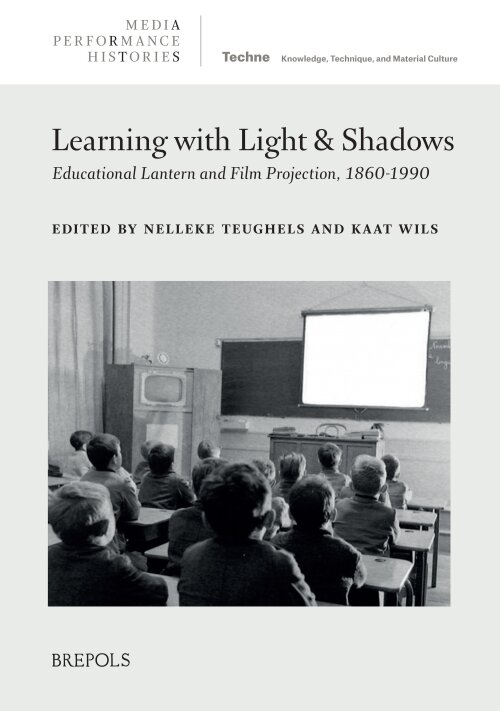Edited by Nelleke Teughels and Kaat Wils
268 p., 44 b/w ills, 18 col. ills, 5 tables b/w., 156 x 234 mm, HB,
Language(s): English
ISBN 978-2-503-59904-5, € 75 (excl. VAT)
Scheduled for October 2022
Also forthcoming in Open Access on brepols.net (ISBN 978-2-503-59905-2)

This book offers a collection of essays that highlight how everyday demands and preferences transformed the ‘ideal’ instructional culture as put forward by policymakers, producers and specialized journals, into distinctive didactic practices that worked around or went beyond the pre-imposed ways of usage of visual media products. By addressing the impact of educational contexts and methods, teachers’ agency, the materiality of teaching with light projection and the power relations involved in the shaping of the instructional culture surrounding teaching with projected images, this volume wishes to move beyond the dominant view of instructional technology as a one-way route to modernization and teaching efficiency. Instead, it wishes to expose the highly personal and creative ways in which educators, in response to everyday demands and restrictions, have defied professional pressures and marketing discourses about instructional use of projection equipment. As such, it also exposes and challenges the determinist discourse on new visual technology’s beneficial impact on educational practices that emphasizes the progress and modernization brought on by its implementation.
Table of Contents
Introduction
Introducing light projection in education
1. The emergence of the projected image as a teaching tool in higher education (1860-1914) – Frank Kessler & Sabine Lenk
2. Taking the university to the people. The role of lantern lectures in extramural adult education in early twentieth-century Brussels and Antwerp – Margo Buelens-Terryn
3. The photographic turn in visual teaching aids: films and slides for schools in the Netherlands, 1911-1926 – Jamilla Notebaard & Nico de Klerk
Agents of change
4. ‘Deep and lasting traces’. How and why Belgian teachers integrated the optical lantern in their teaching (1895-1940) – Wouter Egelmeers
5. Progressive Education and Early Uses of Film in Swiss Schools – Audrey Hostettler
Objects and spaces of change
6. Teachers’ agency and the introduction of new materialities of schooling: the projection lantern and classroom transformations in Antwerp municipal schools, c. 1900-1940 – Nelleke Teughels
7. Casting long shadows on the teaching of experimental physics. The projection techniques of Robert Wichard Pohl (1884-1976) – Michael Markert
8. DIY versus DITMAR 1006: the economics, institutional politics and media ecology of classroom projectors made in 1950s Austria – Joachim Schätz
The political made visual
9. Lantern slides in geography lessons: imperial visual education for children in the British colonial-era – Sabrina Meneghini
10. Complex associations: on the emotional impact of educational film in the German Democratic Republic (1950-1990) – Kerrin Klinger von Engelhardt